Our original plan was a 4 day hike/horseback ride to the pre-Inca ruins of Kuelap, but 2 days into the hike I (Luis) had a slight mishap involving my ankle (read about it and the hike here). So I made it to Kuelap by Mercedes Sprinter and Lacey arrived on foot :).
We had never heard of Kuelap before we started planning our trip to Peru, but once we started looking into we realized it is a very special place. Some go as far as comparing it to Machu Picchu. We will reserve judgement, but I must say it is an impressive place.
Let’s share some background on the place, the educational aspect of Lost World Expedition if you will. Lacey briefly spoke of the Chachapoyas on the last post, so we know they were a pre-Inca civilization that thrived in Northern Peru. Sadly the Chachapoyas were conquered by the Inca Empire around 1475AD not long before the Spanish Conquistadores came to Peru, which means a lot of their history is lost. All we know of them comes from their conquerors the Inca and the Conquistadores so I am sure there is a little bias…
As far as fortresses go Kuelap is impressive, it was built at approximately 9,800 feet above sea level on a ridge overlooking the Utcubamba Valley. The stone walls of the fortress are 60 feet in height and at its widest the fortress is about 360 feet. The entrances that remain are very narrow and provide very easy means to regulate entry to the fortress. If this place was indeed conquered there must have been a very long siege.
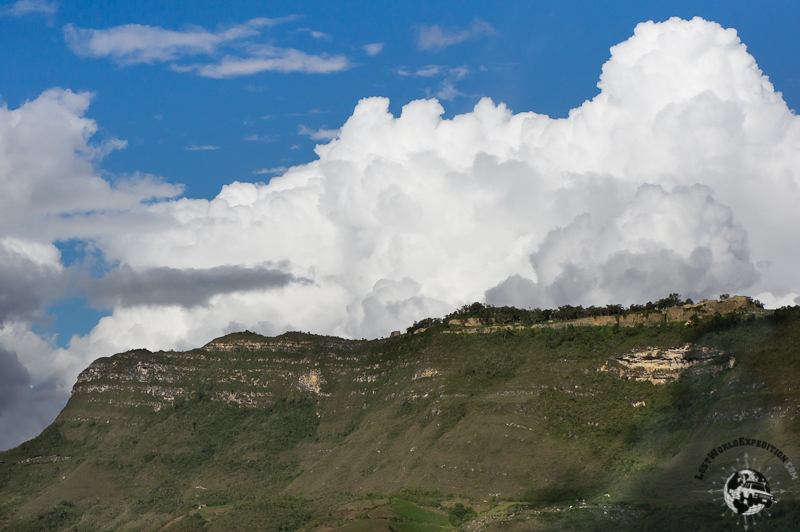
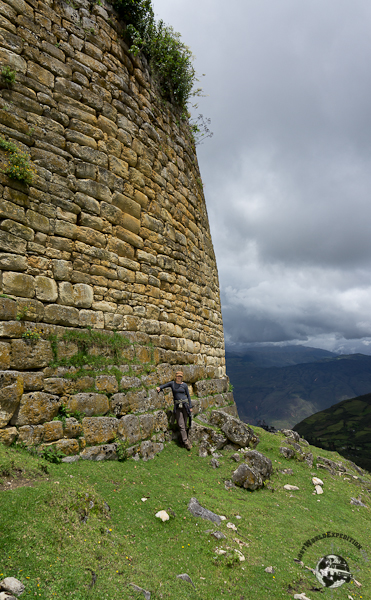

Within the fortress there are as many as 400 dwellings(?) of cylindrical shape, sadly only the bases of the structures remain; however, one structure was rebuilt in order to give visitors an idea of what the “houses” looked like.

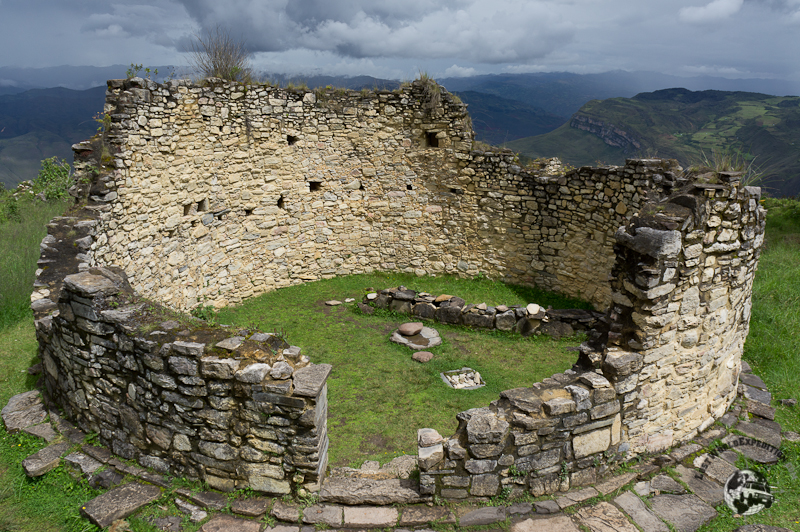
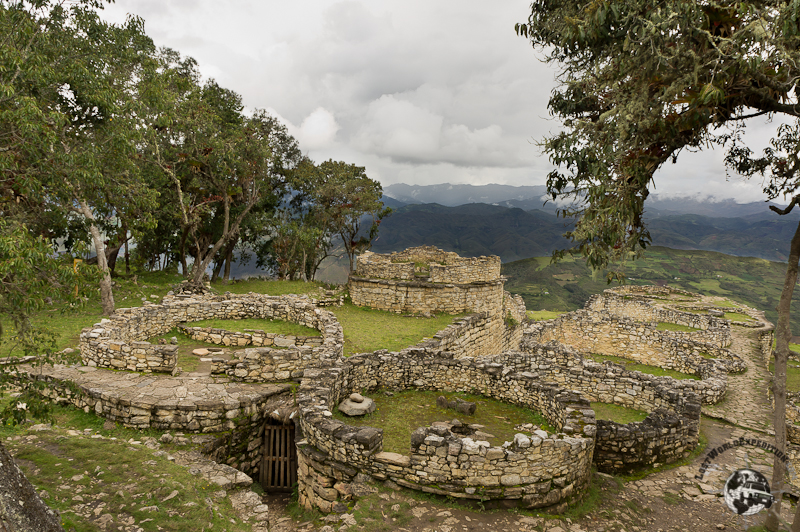
One thing both Lacey and I found quite fascinating was a small structure that remains inside most of the cylindrical houses at Kuelap. In order to save myself and the reader a very bad description, see the photo below. We asked our guide and he informed us that these were “cuyeras” or cuy (guinea pig) housing. It seems to make sense to have fresh food at all times, to grow your own cuy inside the house and feed them all your scraps just like we saw in a current rural abode (on last post).
I must say we were thoroughly impressed by Kuelap. The location, the size of the walls, the views from the top it is all beautiful and seems very well thought out. It has been a while since we visited ruins so we came with a fresh disposition (unlike our 10th ruin visit in Mexico). Kuelap seems a lot more pragmatic than the giant ruins of pyramids we saw in Mexico and Guatemala. Why? Because it is a more usable place. There is very little space used for anything other than homes and gathering places, and it is a very easy place to defend which meant a lot then. Pyramids although beautiful, seem like a waste of manpower to build. The Chachapoyas built a big fort and a ton of houses… “simple” and to the point. They did take the time to choose a beautiful spot to build and decorated with some neat images and architecture 🙂





























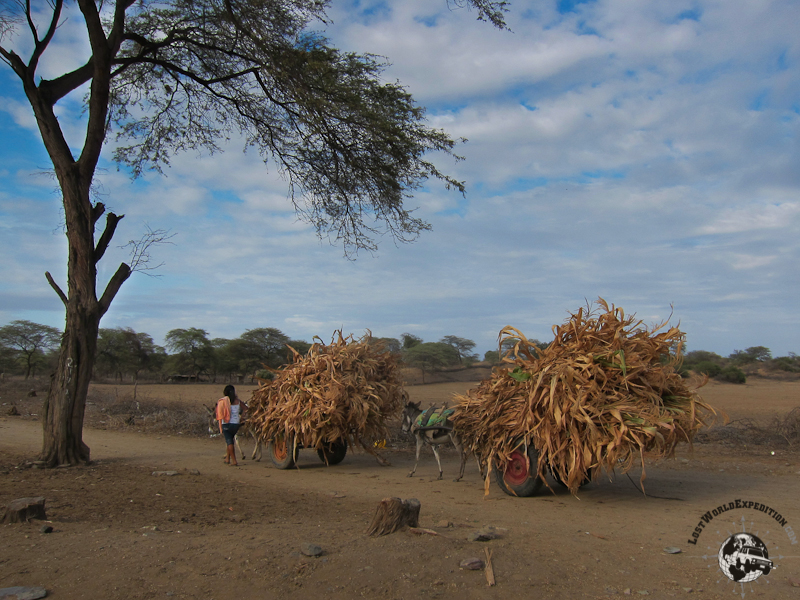
Hey guys, absolutely fantastic photos and write-up!
I’m so impressed with the reading, I look forward to your next post!
Best regards, Mike.
Thanks for the kind words Mike, we really appreciate the feed back. We’ll do our best to keep you entertained 🙂 BTW thanks for naming us one of your favorite blogs on your website 🙂
Awesome ruins! Sorry about the ankle…
I hear ya on the 10th ruins in Mexico thing. Were taking a break till we hit Tikal. Ruined out for now
James, we totally understand the ruined out thing, but definitely don’t miss Tikal. It was our favorite of the Mayan ruins. Luckily with the exception of a few smaller ones, you don’t have to see anymore ruins until Peru. We had enough of a break that they are now amazing us again. Enjoy the road and happy travels!